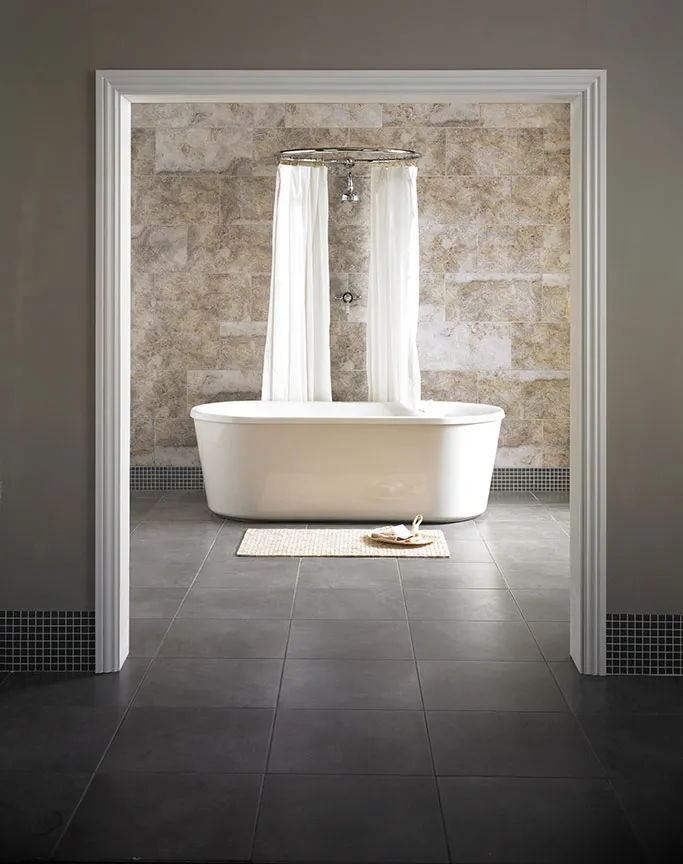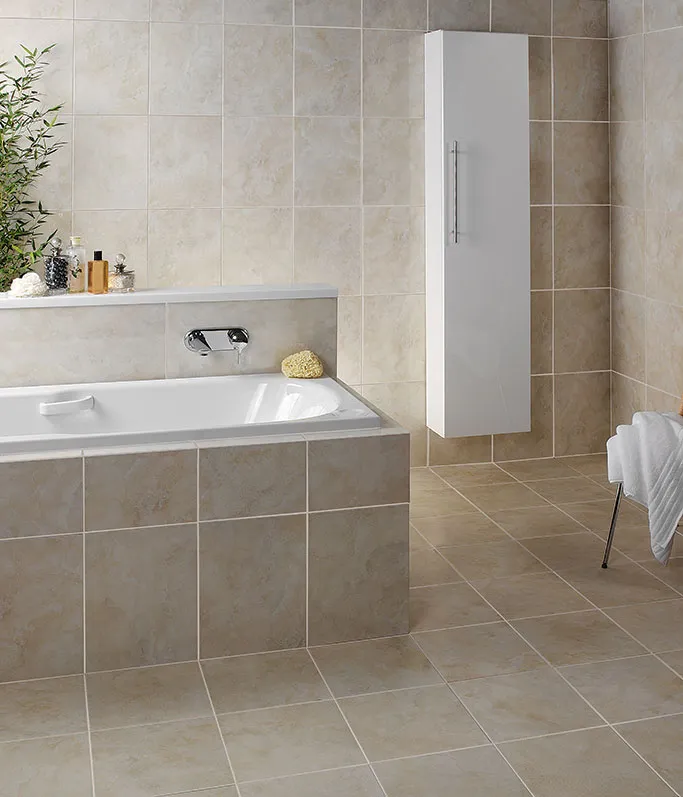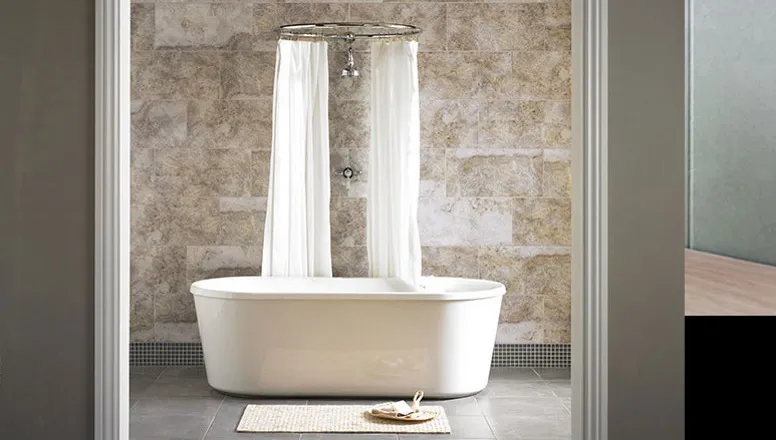There’s nothing quite like stepping out of a shower or bath or walking into the bathroom first thing in the morning with bare feet onto a freezing cold tiled floor – especially in the colder months. Brrr! A shock to the system, I’m sure you’ll agree! So for a climate such as ours, it makes sense to make that experience a little easier.

If you are looking at replacing the flooring or creating an entirely new space in your bathroom, underfloor heating is a great option to warm up the floor as well as the rest of the space. It also gives you the option to forgo traditional style radiators where space is normally at a premium.
But how do you go about installing underfloor heating and what do you need to know before you get started? Well, our guide today will walk you through the choices you have making installation a lot easier.
Electric underfloor heating can be supplied in either a loose cable system for irregular shaped rooms, or mats for larger open spaces which are faster to install and have a fixed cable space. Both options give a pleasant even spread of heat over the floor surface. The systems are easy to install and our recommended product, Ezewarm’s underfloor heating elements are waterproof and have a lifetime guarantee, giving you peace of mind that the product you’ll be installing will last the life of your flooring.

Here’s What You’ll Need:
- A mat or cable system (cable is approx 2mm thick)
- A thermostat to control the system
- (Optional) Insulation boards
Sizing
The most important part about underfloor heating is that ordering the correct size is imperative. You cannot simply cut the end of the mat or cable off to fit your room size so you’ll need to calculate the square meters of the room allowing for a 10cm border around the perimeter and for any fixed furniture. The heating only needs to go in areas free of permanent furniture (baths etc). For example, a 6 metre room of free space will require a 5 metres square of underfloor cable or mat.
Controlling
The thermostat is essential as it controls when your heating will come on, go off and the exact temperature you wish the floor to be. Each thermostat comes with a floor probe that is installed in the adhesive layer, midway between 2 heating cables.
Insulation
Insulation boards provide a perfect subfloor for tiling and are highly recommended for underfloor heating, especially when installing on concrete sub-floors.
Insulation boards are available in 1200mm x 600mm & 6mm and 10mm thickness which covers 0.72 metres square. These boards have an insulating polystyrene core, which is protected by a strong outer webbed cement coating.
In tests with Ezewarm under floor heating products, the floor warming time on an un-insulated floor was cut from over one hour to less than 30 minutes.
To install, simply fix the boards to a concrete floor with tile adhesive or by washers & screws to wood.

Fitting
Tiles should be fixed to the system using the appropriate flexible adhesive & grout. You can enapsulate the cables in a levelling compound before tiling, if required.
When installing Natural Stone onto electric underfloor heating systems an anti-fracture membrane is required.
As a multi-award winning interior design content creator, Kimberly Duran is an Interior Design-obsessed American ex-pat, who chronicles her decorating journey and dispenses interior design advice in her personal blog, Swoon Worthy. When she’s not helplessly drooling over all the latest trends in design, she’s adding things to the imaginary ‘shopping basket’ in her head, she likes to get messy tackling DIY projects with her partner in crime, Wayne, stalking eBay for vintage bargains and filling her home with her favourite neutral – gold.


Underfloor heating in a bathroom is a must! Cold tiles are a real shock to the system, especially in the winter months! Ruby